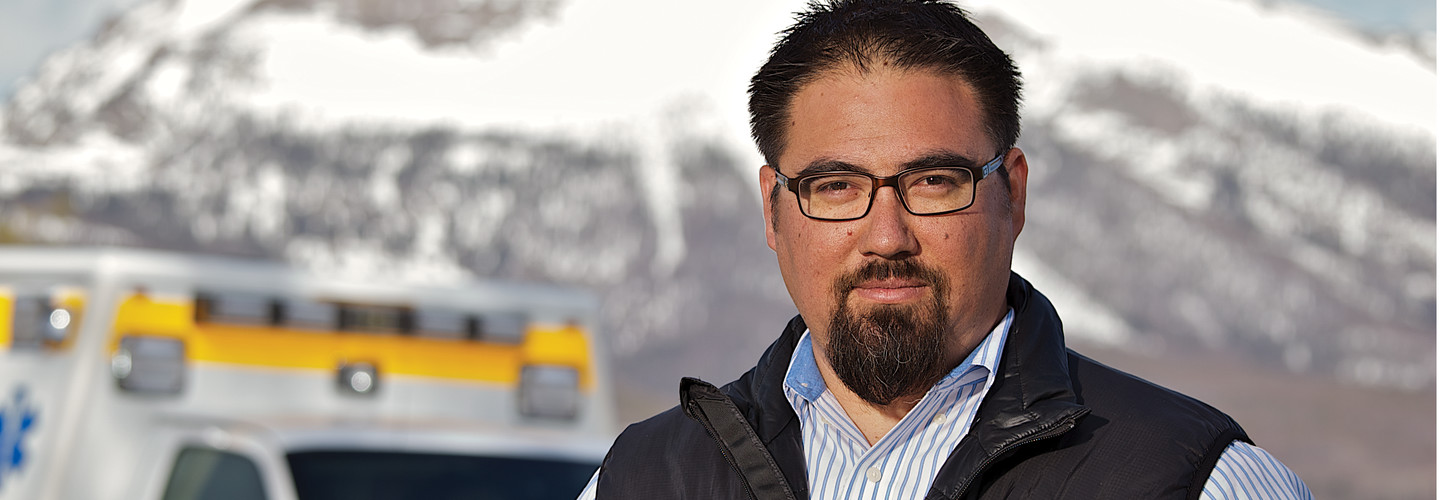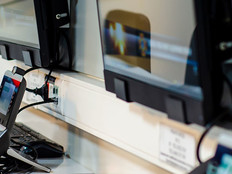Electronic Patient Care Record Systems Aid Emergency Response
Being a paramedic for the Summit County Ambulance Service in Colorado is not for the faint of heart. In this rural, mountainous area, transport times (and thus patient contact) can stretch from one to three hours, compared with 15 minutes in metropolitan areas.
Never mind the extreme temperatures and elevation of 9,000 feet above sea level — carrying out life-saving procedures in a speeding ambulance while also collecting accurate data on a patient's vitals takes a toll on medics and the equipment they use. "Information can get missed if they're trying to write down or remember what they did in that hour and a half," says Joe Ben Slivka, public-safety systems administrator for Summit County.
That's why Slivka outfitted the ambulance service with an electronic patient care reporting (ePCR) system running on Panasonic Toughbook CF31 and CF19 devices. When a call comes in, the dispatch system sends the address to the ePCR application. By pivoting the screen 180 degrees and closing it over the keyboard, the CF19 converts to a tablet, and medics can use the touchscreen or stylus to input pulse, blood pressure, respiration, heart rate, the patient's medications and anything else noted on a head-to-toe assessment.
The assessment can be printed or faxed via Wi-Fi or smartphone to the emergency room before the ambulance arrives. At one of the 37 hospitals with which the ambulance service operates, the report can be transmitted to the patient records system. The ePCR system also links to the ambulance service's billing system. Internally, Summit County Ambulance is now paperless.
"Gone are the days of scratching all your notes down on paper," Slivka says. "Our expectation was to get better control of data; speedier, more accurate billing; and a better picture of what went on during the call."
A Billing Boon
ePCR addresses many emergency rescue challenges, particularly more effective billing, says Guillermo Fuentes, senior associate at Fitch & Associates, an emergency services consulting firm. For example, proper documentation is essential for receiving Medicare and Medicaid reimbursements, which make up 60 percent to 70 percent of billing for the transport business. Electronic capture can support this by requiring, for instance, that mandatory data fields are filled in before medics can proceed to the next field.
ePCR systems also allow organizations to bill within hours of a call, versus the three or four days it took previously to collect information, translate handwriting and enter data. And the systems also ensure quality assurance and accountability through logons, time stamps and electronic signatures. "It's easy to detect which paramedics are performing well and where there are educational opportunities," Fuentes says. "With manual record-keeping, it's very complex to keep quality statistics."
In fact, Fuentes predicts increased uptake of ePCR adoption in the near term, even with reduced state funding. "With the changes in healthcare, such as accountable care organizations, there's a push toward getting more accurate data," he says.
Data accuracy also keeps medics focused on patient care rather than paperwork, leading to greater professional satisfaction and productivity. "Real-time data capture puts the crew on the road more often," Slivka says. "That can mean the difference between five ambulances on a shift versus six. That's a purely economic benefit."
18% to 30% Estimated ePCR application adoption rate among emergency providers
SOURCE: Fitch & Associates
From Notebooks to Tablets
At Sun City West Fire District in Arizona, benefits of ePCR include administrative efficiencies, data consistency and visibility into skill levels. "One medic might say 'abdominal pain,' while another might say 'abdominal cramping,' but with drop-down menus, reporting on the same symptom becomes more consistent," says Deputy Fire Marshal Keith Tanner. Meanwhile, administrators can easily track which medics performed specialized procedures and to what degree of success, and also study patient demographics and symptom trends.
Like Summit County Ambulance, Sun City West Fire District has integrated its dispatch, ePCR and billing systems, and plans to link with hospital electronic medical records. However, Tanner has moved from notebooks to Motion Computing J3500 tablets to reduce costs and keep up with technology. "The tablet is half the price, once you add the protective screens," he says, plus it offers better performance.
Medics like the elastic band that allows them to wear the tablet on one hand and operate the stylus with the other, and they also prefer its signature capture functionality. Before, if patients rested a hand on the notebook screen, the cursor would move to that spot. "It was cumbersome, and they had to be really careful where they touched the screen," Tanner says.
Not everyone likes the virtual keyboard, Tanner says, although it is expandable and can be moved around so as not to cover fields. The tablet also comes with a docking cradle that includes a real keyboard for medics to use when typing patient narratives upon returning to the station.
Cost Versus Benefits
Other emergency services organizations, while attracted to tablets' lower costs, either cannot find one that is compatible with their software or aren't ready to make the switch from notebooks. Castle Rock Fire and Rescue Department in Colorado considered the Panasonic tablet. However, the organization needs the Panasonic Toughbook's horsepower in its four fire engines and three ambulances to run not just ePCR but also mapping and dispatch, says Norris Croom, deputy chief of operations. "It's hard to justify both in the same rig," he says. "As we move forward, there might be an opportunity to use the tablet just for ePCR and leave the laptop in front of the rig, which could also serve as backup."
A Focus on Quality
Castle Rock responds to 4,000 calls per year and relies on the time savings and increased data accuracy of ePCR, as well as the reliability of the Toughbooks. "We've recaptured 25 minutes per call of our employees' time for more valuable activities, such as patient care and training," Croom says. And with accurate time stamps, "we can see whether we've followed protocol," which is crucial for quality reporting and systemwide improvements. "It allows us to say, 'This happened in 14 minutes' versus guesstimating it was 10." The system also captures heart rhythms directly from its Lifepak 12 cardiac monitors via Bluetooth, stores them in the patient report and can replay them for emergency room doctors.
Quality of care was similarly the focus for ePCR at the Scottsdale Fire Department in Arizona. With 16 trucks in service, call volumes are high, and the 25 ePCR-equipped Toughbooks enable more consistent recording of data, says Roderick Thompson, battalion chief in the medical services unit. "With a keystroke, we can perform quality assurance almost in real time," he says. "We can harvest our data to make sure treatments are in line with our protocols, policies and procedures, and if something is outside the lines, we can conference with the paramedic to correct it."
The fire department works with a contracted ambulance provider, which uses the same hardware and ePCR software. Wireless data exchange between the two systems enables continuity of care, Thompson says. Scottsdale has also worked with some hospitals to enable electronic data transfer.
For any emergency response organization, the biggest benefit of ePCR is that it places the focus not on data entry but on patient care. "Public-safety professionals are 'doers,' " Tanner says. "They want to go fight fires and take care of patients — they never set out to sit in front of a computer and type."
Hospital Transfer
The next step with ePCR is electronically transferring patient care data to the hospital's electronic medical records system, according to emergency services providers.Currently, most responders equip their rigs with a wireless printer or send the report to a hospital printer, fax machine or secure web portal. Although some have made this connection with a single hospital, it is complex and time-consuming, never mind that most providers work with several — even dozens — of hospitals.
Guillermo Fuentes, senior associate at emergency services consultancy Fitch & Associates, estimates that only 7 percent or 8 percent of emergency services organizations have achieved end-to-end integration with their own internal systems and the hospital. Challenges include varying protocols, hospital systems and privacy policies, as well as a lack of data uniformity. For instance, some address fields list the number first, while others start with the street or state. "It's complex to have the right script algorithm so that the data fields line up," he says.







